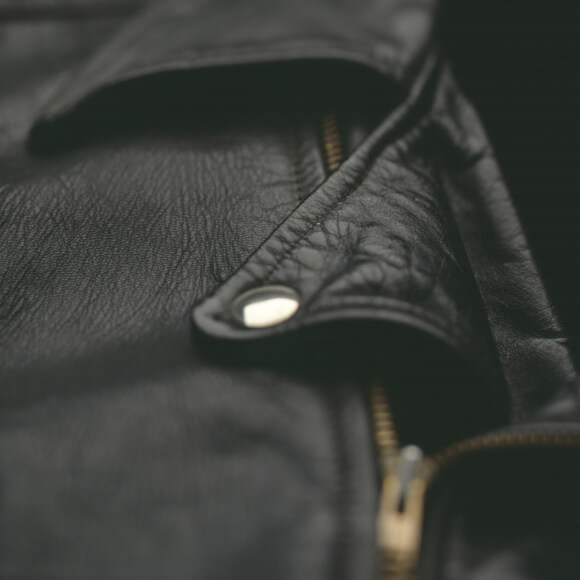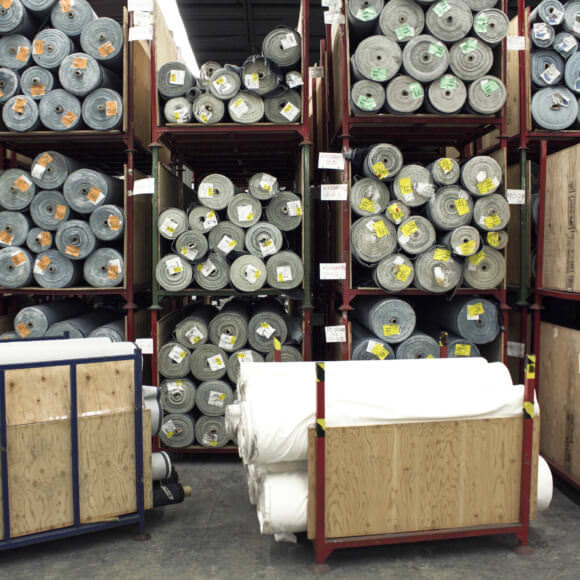Originally a shirt and overalls manufacturer, the long-standing family-run company Rubin Brothers was founded in Montreal in 1901 by brothers Charles and Bernard Rubin. Although the business initially ran a small boutique, by the 1960s it had expanded into designing and producing suits, jackets, pants and outerwear. At its height, it employed 900 people.
The 1960s saw radical changes to men’s fashion, with men embracing bright colours and ostentatious patterns in clothing to a degree not seen since before the French Revolution.
This ‘Peacock Revolution’ was driven by the youthful countercultural movement and heavily promoted by magazines like GQ and Esquire. Menswear began to mirror the rapid style changes and planned obsolescence of women’s fashion, leaving many traditional men’s manufacturers struggling to keep up with new market demands.
The modern, computerized Rubin Brothers factory, which had opened in Victoriaville in 1965, could offer fast, customized production and was very engaged in the development and diffusion of flamboyant, trendy menswear during this time. Inspired by the automotive industry, the Victoriaville factory was set up for assembly line production, which enabled Rubin Brothers to quickly produce a wide variety of daring silhouettes and styles. The company could deliver its apparel in half the time required by traditional manufacturers, giving it a great advantage in the competitive US market.
Rubin Brothers often collaborated with retailers and boutiques, offering customized fabrics, silhouettes and unconventional trimmings.
Although the garments were forerunners of fast fashion in the sense that they were mass-produced and essentially disposable, Rubin Brothers suits were expensive due to their unique and trendy styling.
The early 1970s were a golden era for the company: annual sales of approximately $30 million and Rubin Brothers apparel available across Canada and in more than 350 stores in the US. According to the company’s stylist, Morris Gay, a Toronto-based men’s fashion retailer and consultant (and a 1973 nominee for Tailor & Cutter magazine’s list of the top 10 best-dressed men), Rubin Brothers sold more than 300,000 suits annually. In 1973, the company partnered with C. Itoh Co. Ltd. of Japan to bring some of its manufacturing to Asia and, in 1975, it opened a plant in Columbia to help serve the demands of the US market.
The economic downturn and recession of the late 1970s adversely affected the market for flamboyant, expensive men’s suits and by 1982 Rubin Brothers had closed its Victoriaville factory and ceased all operations
Sources
Frank, Thomas. The Conquest of Cool: Business Culture, Counterculture and the Rise of Hip Consumerism. Chicago: University of Chicago Press, 1997.
Gigantes, Philippe Dean. “Once thriving firm ‘going, gone’ as Rubin Brothers gear sold off.” The Montreal Gazette, September 27, 1982, 14.
Picton, John. “Spring sales encouraging: Market for men’s ready-to-wear increases.” The Globe and Mail, May 25, 1971, B1.
Rider, Wini. “The ‘Peacock Revolution’: It’s over.” The Montreal Gazette, April 18, 1972, 12.
Rider, Wini. “PM only second best- sartorially speaking.” The Montreal Gazette, November 13, 1973, 25. .





